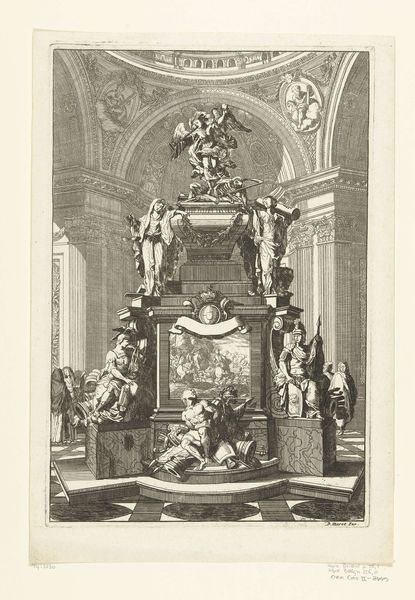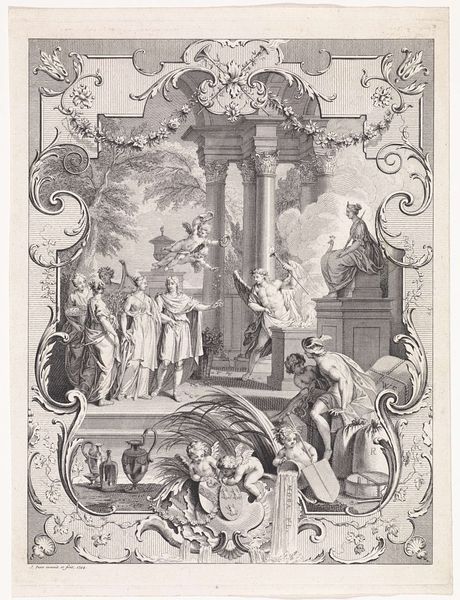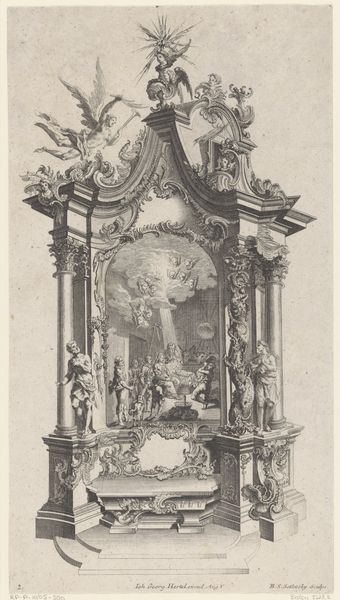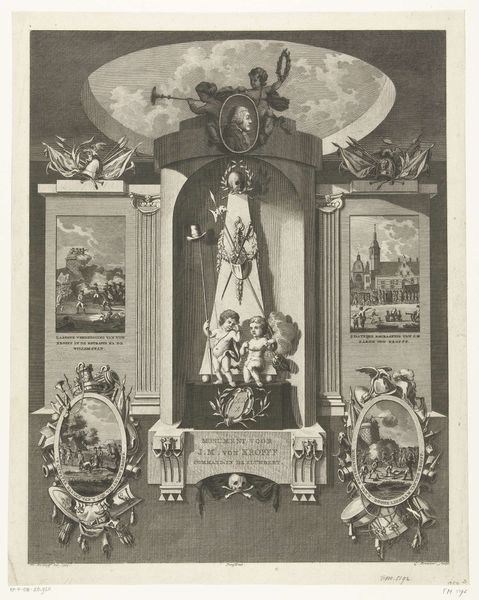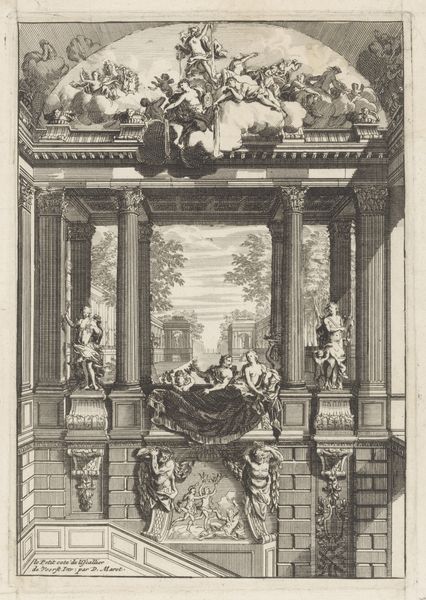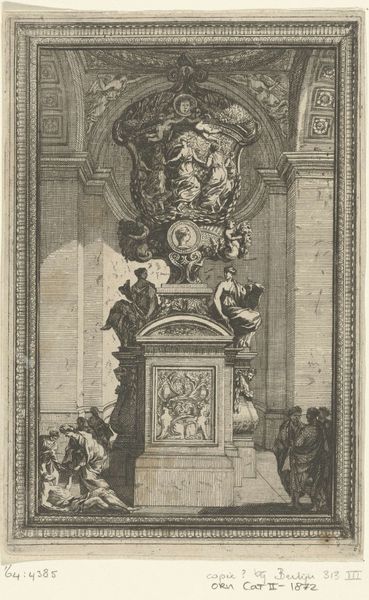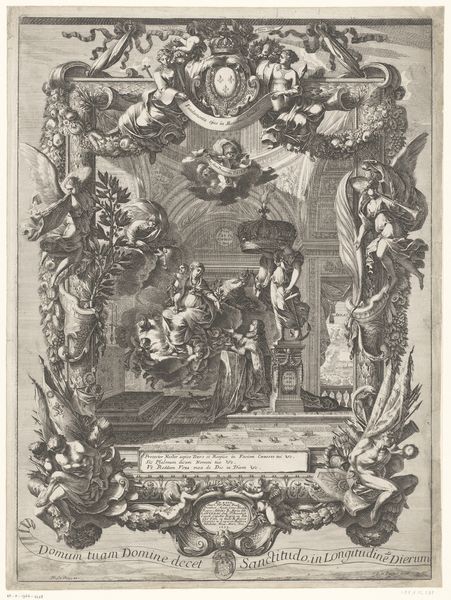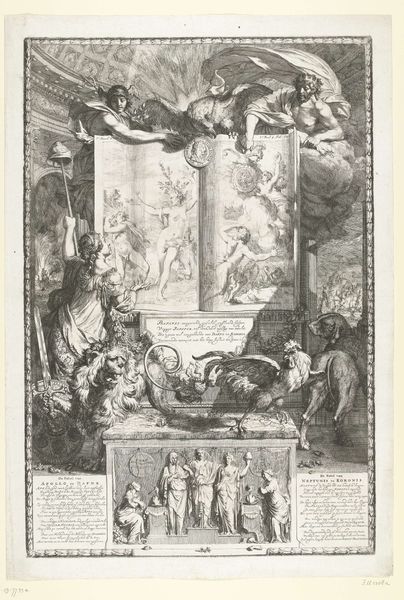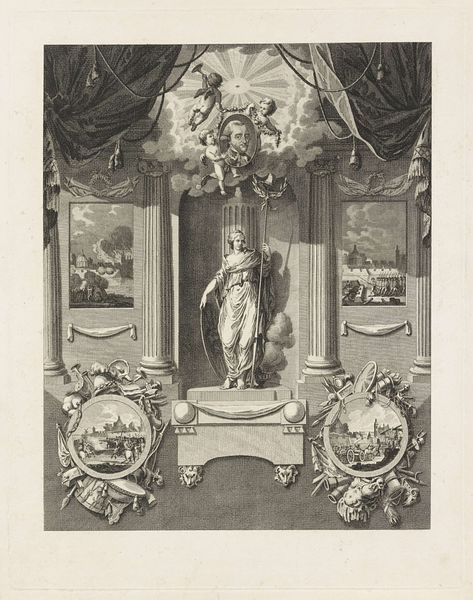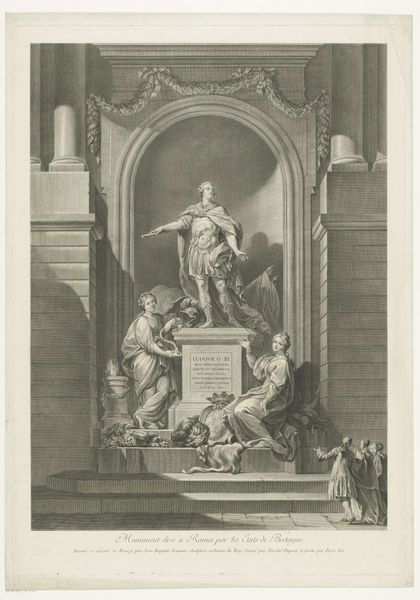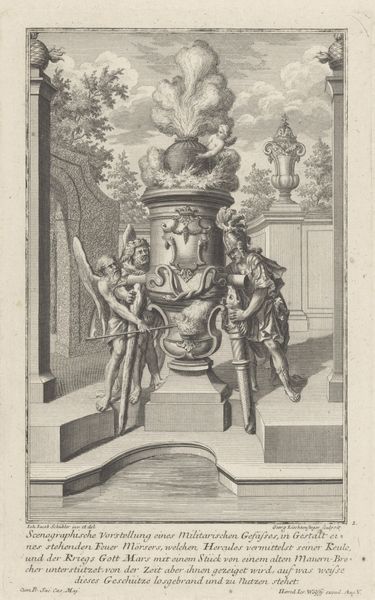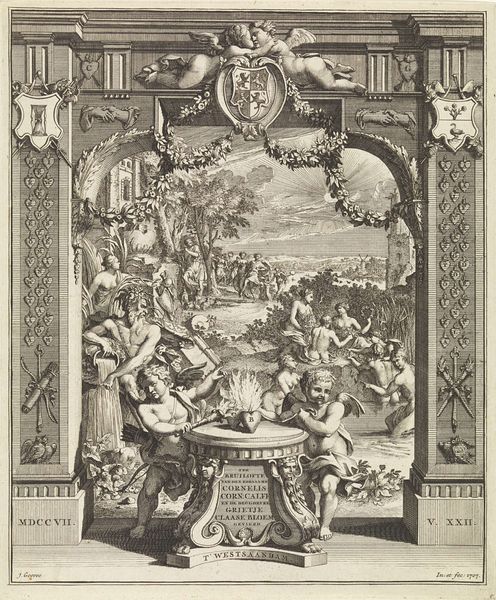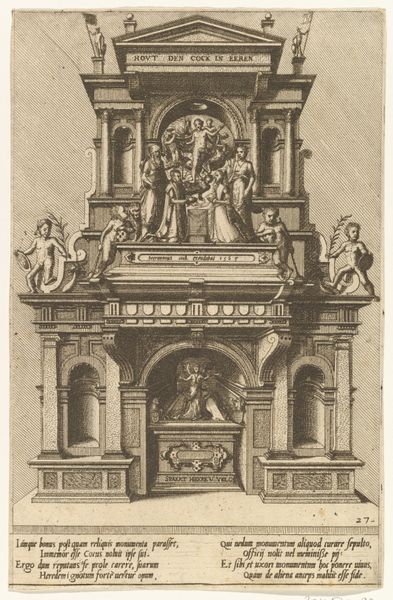
Allegorische voorstelling ter gelegenheid van het huwelijk van Abraham Buyssant en Catharina des Amorie 1720
0:00
0:00
janwandelaar
Rijksmuseum
print, engraving
#
allegory
#
baroque
# print
#
old engraving style
#
history-painting
#
engraving
Dimensions: height 230 mm, width 190 mm
Copyright: Rijks Museum: Open Domain
Editor: Here we have Jan Wandelaar's "Allegorical Representation on the Occasion of the Marriage of Abraham Buyssant and Catharina des Amorie," created in 1720. It's an engraving, and the baroque style really pops out to me – it has that dramatic, almost theatrical quality. All of those figures packed together, it feels so celebratory! What strikes you when you look at this piece? Curator: Celebratory indeed! I see a confection of symbolism. Weddings, especially in the Baroque, were opportunities for artists to display layers of meaning. That temple, for instance, suggests a foundation built on virtue. And look at the figures showering the couple with coins. Isn't it interesting how material wealth is incorporated into the allegorical vision? Editor: It’s pretty explicit, isn’t it? Like, "here's wealth coming your way!" All that detail, the textures created by the engraving… it's astonishing! How would this engraving have functioned back then? Curator: These prints would have circulated amongst the elite, affirming their status. Consider the inscription at the top – almost like a formal announcement elevated to high art. Do you see the figures on the bottom, the almost earth-bound ones, weighed down by jugs? Editor: Now that you point it out, it looks as though those figures literally carry the weight of prosperity. It is really a very detailed, purposeful piece. I can appreciate its cultural and historical significance much better. Curator: Absolutely. Looking closer has helped me realize how wealth and social class could take flight in something as seemingly conventional as a wedding portrait. It's a fascinating echo of the values held so dearly. Editor: I hadn't considered it on a symbolic level like this before! This experience has truly given me a new lens through which to view historical portraiture.
Comments
No comments
Be the first to comment and join the conversation on the ultimate creative platform.
